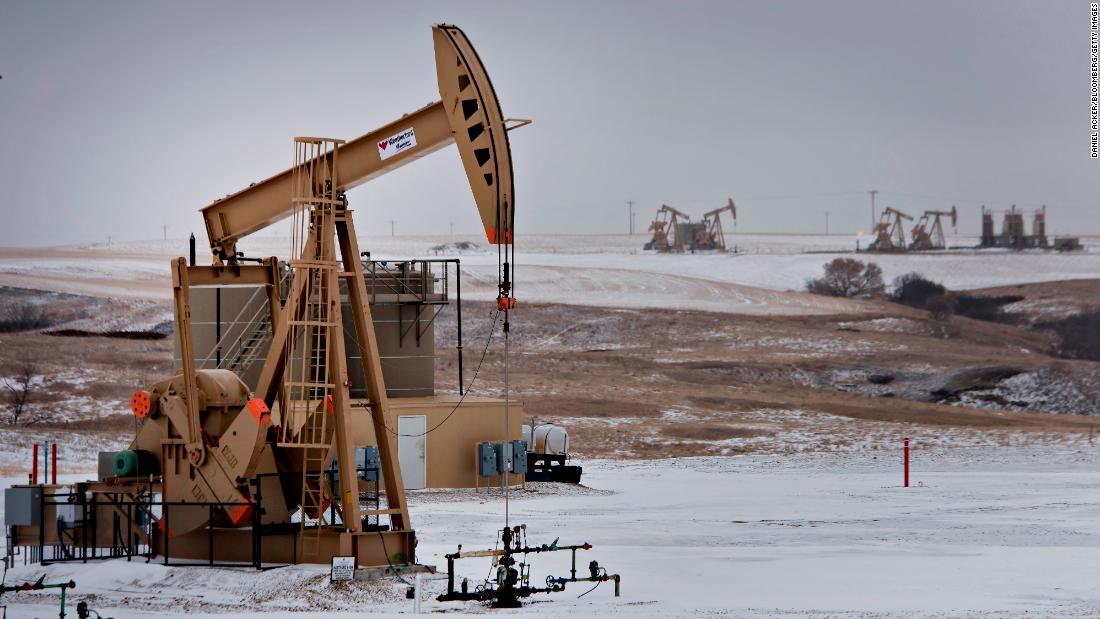
Frackers frequently tapped into cheap capital from the bond markets, and used the borrowed money to make enormous technological advances in drilling that sent US oil output skyrocketing.
But that trend has broken down in recent months. US oil exploration and production companies, long mainstays of the bond market, have gone missing.
US oil exploration and production companies have issued no bonds since October 5, according to research firm Dealogic. Only a handful of more diversified companies focused on oilfield services and pipelines have sold debt.
The sudden drought of energy bonds reflects a two-fold problem for oil companies.
Oil prices plunged late last year, which can make investors nervous about the ability of drillers to pay down debt. And investors generally decided to run away from risky companies.
Fears of an imminent recession caused such chaos on Wall Street that the junk bond market shut down in December.
"The high-yield market went into a tailspin," said Mark Howard, senior multi asset specialist at BNP Paribas. "It just wasn't a good time for oil companies to issue debt, even if they wanted to."
Investors, fearful of defaults, demanded a hefty premium to lend to energy companies.
The spread between the Bloomberg Barclays High Yield Energy Index and ultra-safe government bonds exploded from just 3.5 percentage points in October to 7.15 percentage points in late December, according to Spencer Cutter, a credit analyst at Bloomberg Intelligence.
The relative cost of borrowing almost doubled over the span of two months.
"It would have been pretty expensive to issue debt in that environment," said Cutter. "Companies with shakier finances couldn't have accessed the market back then."
Spreads have since eased significantly, in tandem with the rebound in crude prices and stock prices.
'Investors woke up'
The absence of oil drillers from the bond market reflects a major shift. Between 2010 and 2018, US oil exploration and production companies raised a whopping $313 billion through the bond market, according to Dealogic.
But many investors still have bad memories from a wave of oil bankruptcies set off by the 2016-2017 crash in crude and that's led companies to make changes.
Frackers that survived the last crash pledged to clean up their balance sheets.
"There's this new mantra: We're going to live within our means," said Cutter.
Instead of issuing a ton of debt to drill new wells, frackers have promised investors they will use operating cash flow. That means fewer trips to the bond market, especially because most energy companies don't have a lot of debt coming due this year or next.
Some frackers have decided to cut back on expensive drilling to adjust to lower oil prices. The number of active US rigs drilling for oil fell to an eight-month low last week, according to Baker Hughes. Rig counts are down by about 5% since mid-November.
Wall Street wants these highly leveraged oil companies to have cash left over to reward shareholders with dividends and buybacks. That's not possible if they've piled on excess debt.
"Investors woke up and realized this was built on debt," said Cutter. "They want to know when these companies are going to start generating returns rather than constantly feeding it back into the business."
Hess CEO John Hess told analysts last week that the company will soon be generating free cash flow, thanks to new offshore projects in Guyana and accelerating production in the Bakken shale oilfield of North Dakota.
"We are at an exciting inflection point," Hess said. He promised to grow free cash flow in a "disciplined and reliable manner," while eventually prioritizing dividends and share buybacks.
Distressed oil companies
Still, the recent silence in the junk bond market underscores the risk that companies with weak balance sheets face during times of market stress. Without access to capital, these oil companies could succumb to bankruptcy.
"It accelerates the inevitable for some," Cutter said. He cautioned that while bankruptcies could rise, they're unlikely to reach the level that occurred in 2016 and 2017 because the sector is a lot healthier.
But he noted that the bonds of a handful of oil and gas companies are trading at distressed levels, including California Resources (CRC), Denbury Resources (DNR), EP Energy (EPE) and Weatherford International.
Distressed bonds typically have yields 10 percentage points or more above government debt.
Weatherford, an oil services company, suffered an 87% collapse in its stock price last year. Despite a sharp rebound in 2019, Weatherford remains a penny stock.
"With the stock trading where it is, the elephant in the room" is what it would take for Weatherford to consider bankruptcy or a restructuring, RBC analyst Kurt Kevin Hallead asked Weatherford executives during a conference call last week.
Weatherford (WFT) CEO Mark McCollum responded by saying Weatherford would talk to its lenders about potentially accessing its line of credit.
"I don't waste a lot of time thinking or planning how to fail," he said.
Bagikan Berita Ini














0 Response to "Why oil companies have suddenly gone missing in the bond market"
Post a Comment